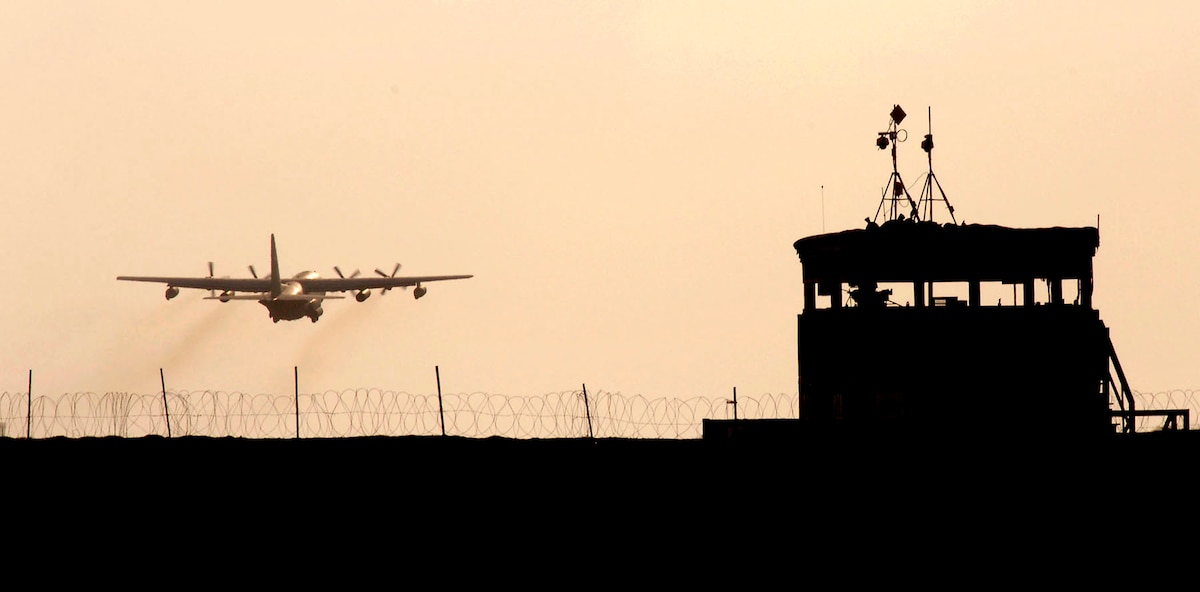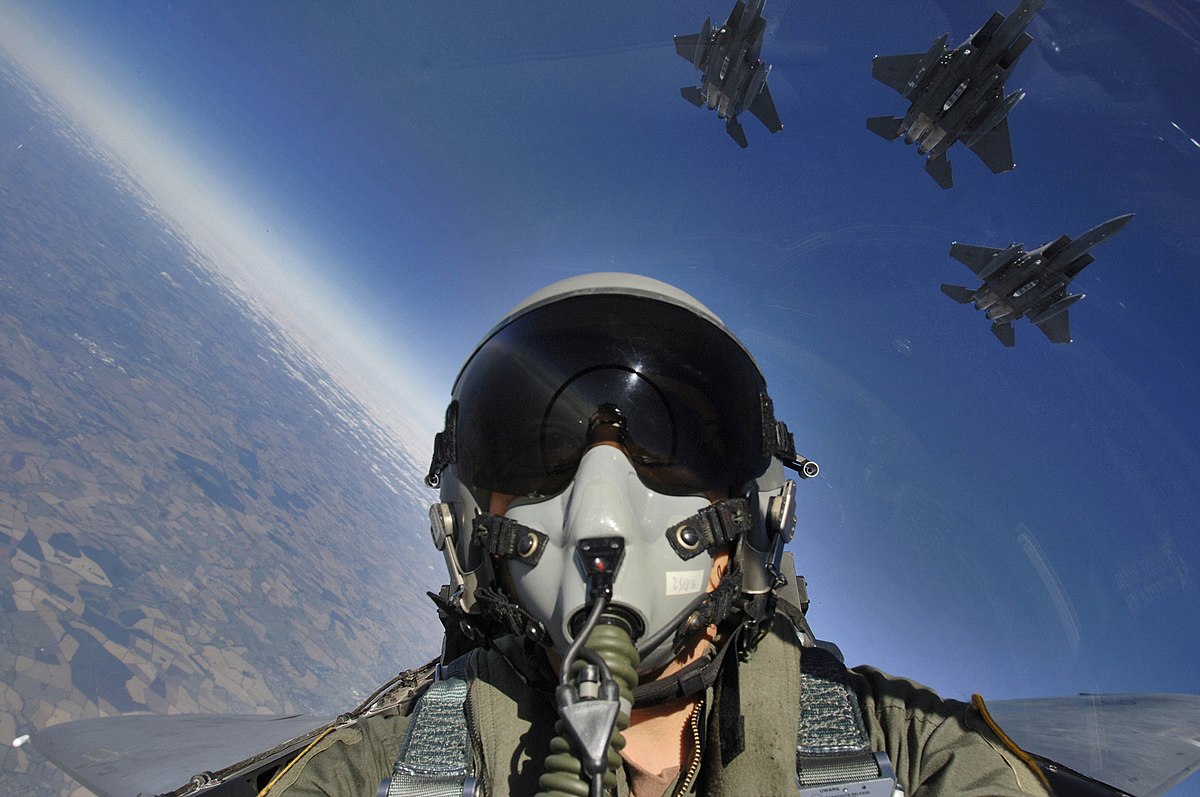Tens of thousands of specially made eyewear are being purchased by the US Air Force to protect fighter pilots around the world from laser beams at a time when there has been a rise in incidents of the Chinese military firing military-grade lasers or flares on Western warplanes.
Rafale Fighters: Another Russian Ally Looks For French Warplanes As Many Nations ‘Dump’ Russian Jets
In light of the recent rise in laser incidents, the equipment attempts to reduce the possible risk to pilots and other cockpit crew. More importantly, though, it is the first time that eyewear provided by the Air Force is made to fend off both laser and ballistic threats. The Air Force Life Cycle Management Center’s Human Systems Division made the announcement.
According to the Air Force Safety Center, flash blindness can occur when a laser pointer’s beam strikes an eyeball or the windshield of an aircraft. This is especially dangerous for military personnel who are taking off or landing. However, by preventing these disruptions, lives can be saved on the ground and in the air.
Capt. Pete Coats, who leads the eyewear initiative at Wright-Patterson Air Force Base in Ohio, said in a press statement, “The health of the eye is so important to our pilots. The consequences of getting lasered without having proper protection could not only prevent the pilot from flying and landing an aircraft safely but also cost them their career. So, we aim to ensure the right eyewear is available to everyone.”
Airmen can be protected against such potentially fatal consequences with eight types of eyewear, including anti-laser spectacles for use during the day and at night, anti-ballistics glasses, and visors that interface with night-vision goggles.
The service said the equipment is designed to safeguard all aircrew members, except pilots in the F-35A Lightning II fighter and the U-2 Dragon Lady spy plane. Pilots operating slow-moving, low-altitude platforms like tilt rotors and helicopters require defenses against lasers and ballistics, while pilots operating fighter or bomber jets probably have to ward off unwanted beams.
Over the next three years, the military intends to provide more than 42,000 pairs of glasses and visors to its units. The service says that in addition to providing better protection, the night eyewear will increase crew members’ visibility by letting more natural light pass through the lens. Moreover, the mission will determine what kind of eyewear protection aircrew are given.
Installations throughout the world have demonstrated the need for such precautions. For example, Italy’s Aviano Air Base said in October that it had recorded 13 laser accidents against its aircraft in the previous year.
According to the base, the lasers were primarily pointed toward the HH-60 Pave Hawk search and rescue helicopters since they are more straightforward targets than the F-16 Fighting Falcon aircraft also stationed there.
Moreover, the United States and its allies in the Indo-Pacific remain at loggerheads with China due to its growing military might and escalating tensions in the region. In the last couple of years, the Chinese People’s Liberation Army Navy (PLA) warships and fighter jets have been accused of employing laser beams capable of gravely jeopardizing aircraft safety.
The US Pentagon, for example, declassified new documents last month that detailed how Chinese military aircraft had engaged in some 180 dangerous incidents over the South and East China Seas in the past two years. In most interception incidents that have been reported over the years, Chinese crew are known to shine military flares or lasers on aircraft belonging to the US and its allies around the world.
EurAsian Times rewinds into the incidents that may have triggered a rethink within the US Air Force and the purchase of the cutting-edge and latest anti-laser eyewear for airmen around the globe.
China’s Lasers Vs. The US And Its Allies
Although it might appear innocuous, shining a laser at an airplane can be extremely dangerous for everyone on board and anyone in the neighborhood. In recent years, “lasing,” or laser strikes on airplanes, has become an increasingly severe threat to aviation safety.
China, for one, has become notorious for employing this military-grade laser on hostile aircraft. By illuminating airplane cockpits, military-grade laser beams, also called “dazzlers,” produce an intense light beam that can be used to momentarily blind pilots.

In 2018, the Pentagon lodged a formal diplomatic complaint with China about Chinese nationals shining military-grade laser pointers at US pilots operating out of the American base in Djibouti. At the time, the US alleged that in one incident, two USAF pilots on a C-130 cargo plane suffered minor eye injuries as they came in to land at the US military’s Camp Lemonnier base. China also has a military base in Djibouti.
Further, Australia had also flagged that hand-held lasers were increasingly being used against ADF assets in 2019, with military officials blaming tiny Chinese maritime militia vessels.
Anticipating that the formal complaint would lead to curbing the dangerous laser incidents, the US was caught unaware again in 2020 when the US Navy accused a Chinese warship sailing in the Pacific of firing a military-grade laser at its P-8 Surveillance aircraft.

The People’s Republic of China “navy destroyer’s actions were unsafe and unprofessional,” US Pacific Fleet said in a statement. “Weapons-grade lasers could potentially cause serious harm to aircrew and mariners, as well as ship and aircraft systems.”
A similar incident happened again in February 2022, albeit with the Australian Defense Force. A Chinese military vessel was accused of endangering the lives of the Australian Defense Force after a laser was shone at a P-8A maritime aircraft just north of Australia.
Not just Chinese warships and nationals but Chinese fighter jets have also been accused of using military-grade lasers to rattle the fighters belonging to the US and its allies.
For instance, in May 2022, a J-16 aircraft of the PLA Air Force reportedly fired these lasers on an Australian P-8A flying over the South China Sea as part of an overall dangerous interception that jeopardized the safety of the Australian crew.
At the time, the Australian Defense Defense Minister Richard Marles told the media, “The J-16 accelerated and cut across the nose of the P-8, settling in front of the P-8 at a very close distance. At that moment, it released a bundle of chaffs, which contained small pieces of aluminum, some of which were ingested into the engine of the P-8 aircraft. Quite obviously, this is very dangerous.”
The year 2023 also started on a high note for China’s lasers. In February this year, the Philippines accused China’s coast guard of using a laser to try to disrupt a resupply mission to troops in the South China Sea. At the time, the United States expressed complete solidarity with Manila against the laser incident.
On its part, the Chinese Foreign Ministry responded by saying that the Chinese vessel did not direct lasers at the Filipino crew and that the “handheld equipment” did not cause any damage to the vessel or the crew onboard.
However, as the PLAAF carries out dangerous interceptions of rival jets, using military lasers to buzz the jets may never be off the table. The latest announcement shows that the anti-laser eyewear appears to be a safe bet in the face of that constant threat.
- Contact the author at sakshi.tiwari9555 (at) gmail.com
- Follow EurAsian Times on Google News




